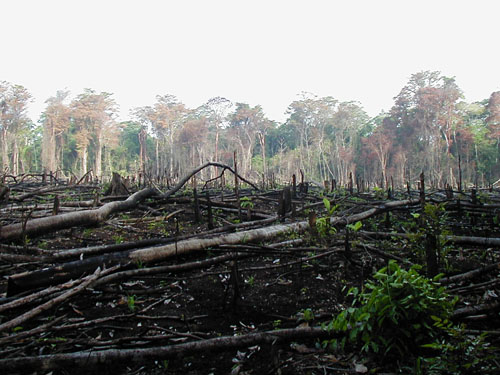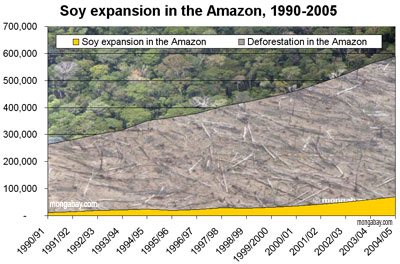The agrofuels boom
A number of Latin and Central American countries (namely Argentina, Brazil, Uruguay, Colombia, Costa Rica, El Salvador and Guatemala) are currently experiencing what can be called an agrofuels’ boom.
The rapid expansion in the use of agricultural crops as transport fuel could be seen as a prodevelopment policy that could help bring developing countries out of poverty along with fighting climate change. This could indeed increase agricultural production, generate foreign income through exports, make countries less dependent on imports of fossil fuel and drive new investments in agriculture and rural communities.
However the agrofuels boom has actually serious social and environmental impacts:
- conversion of small productive family farms in monoculture crops leading to higher unequal ownership and to rural employment drop;
- agriculture intensification (use of GM seeds and intensive use of agrochemicals) resulting in crop vulnerability, in soil and water table contamination and in higher economic risk ;
- conversion of natural ecosystems leading to threats to biodiversity and having a negative impact on CO2 emission ;
- and last but not least, it has direct and indirect sizeable impacts on deforestation of the Amazon region.

Deforestation in Matto Grosso Brazil seen by ASTER in 2006. Since 1970, Brazil has lost close to 700,000 km2 of its forest much of it due to the expansion of cattle ranching and agriculture. This is an area almost the size of France and Belgium. At the current deforestation rate, the Amazon Rainforest will be reduced by 40% in 2030 - Source: NASA and U.S./Japan ASTER Science Team
Deforestation
The Amazon Rainforest spreads over nine nations and covers approximately seven million km², making it the world’s largest contiguous tropical forest.
Intensively-farmed monocultures, such as sugar cane or soy farms, which require large amount of land, chemicals and water, can cause some forest clearing directly. But they have a much greater impact on deforestation by consuming already cleared land, savannahs, and transitional forests, thereby competing with cattle ranching, the dominant form of agricultural land use. They push ranchers and slash-and-burn farmers always deeper into the forest frontier, increasing deforestation. They also provide a key economic and political impetus for new highways and infrastructure projects, which accelerate deforestation by other actors.
 Deforestation is the single largest source of land-use change emissions, i.e. the conversion of forest to pasture land. The carbon stored in vegetation and soil is released directly if the forest is burned (i.e. slash and burn) or more slowly if it is left to decay. Also, the re-absorption of CO2 (sequestration) through photosynthesis is reduced, leaving more CO2 to accumulate in the atmosphere. More than 90% of land-use change emissions originate from tropical (developing) countries. Out of those 90%, 30% and 20% are attributed to deforestation in Indonesia and Brazil respectively.
Deforestation is the single largest source of land-use change emissions, i.e. the conversion of forest to pasture land. The carbon stored in vegetation and soil is released directly if the forest is burned (i.e. slash and burn) or more slowly if it is left to decay. Also, the re-absorption of CO2 (sequestration) through photosynthesis is reduced, leaving more CO2 to accumulate in the atmosphere. More than 90% of land-use change emissions originate from tropical (developing) countries. Out of those 90%, 30% and 20% are attributed to deforestation in Indonesia and Brazil respectively.
Improved infrastructure combined with rising demand for vegetable oils for food, industrial uses, and biodiesel production led to the  spread of soybeans cultivation in the Amazonian states (since 2000 the area of land in soybean production has expanded at the rate of 17% per year) causing the destruction of 21 million hectares of forest in Brazil, 14 million in Argentina and 2 million in Paraguay.
spread of soybeans cultivation in the Amazonian states (since 2000 the area of land in soybean production has expanded at the rate of 17% per year) causing the destruction of 21 million hectares of forest in Brazil, 14 million in Argentina and 2 million in Paraguay.
In Brazil, sugarcane is spreading to regions where it has never been grown before, threatening natural sites such as the Pantanal Wetland in Matto Grosso.
Soy production is heading northward, encroaching on the Amazon. As demand for biofuels continues to grow, there is also a very real possibility that oil palm could become a dominant crop in the Amazon — an ominous development considering that the planting of oil palm plantations has been the driving force behind the recent destruction of huge areas of rain forest in Indonesia and Malaysia.
Soy expansion in the Brazilian Amazon, 1990-2005. Total deforestation and area
of soybean cultivation across states in the Brazilian Amazon. Overall soybean
cultivation makes up only a small portion of deforestation, though its role
is accelerating - Source: Mongabay.com
Definitions
Agrofuel is defined as solid, liquid or gaseous combustible fuel derived from renewable and non-fossil organic (or biological) material. Globally, biomass fuels are most commonly used for cooking and space heating of homes, as well as central heating of homes and larger facilities.
Simply put, the use of agrofuels as substitute for liquid fossil oil based fuels in transportation vehicles can be achieved by two common strategies:
- Ethanol can be obtained from fermentation of sugar or starch crops, like sugar cane or corn. It can be used in a regular car motor when it is mixed with gasoline or can replace gasoline with specially adapted motors ;
- The second strategy is to extract oil from oil-producing plants such as oil palm, soybean or rape. When these oils are heated, their viscosity is reduced, and they can be burned directly in an adapted diesel engine. Oils can also be chemically processed to produce biodiesel. Biodiesel can be used in its pure form in a regular diesel engine without any modification.

Agrofuels are produced from a great variety of crops. Energy efficiency and environmental impact vary from simple to quadruple depending on the plant. Most biofuels have an overall environmental performance that is worse than gasoline, though their relative performance differs considerably. The figure shows GHG emissions of biofuels related to their gasoline or diesel alternatives and overall environmental impact assessment.Source: Organisation for Economic Co-operation and Development
Some numbers
Brazil
Over the last 30 years, Brazil has achieved the lowest production costs for fuel derived from sugarcane.With 7 millions ha cultivated, Brazil became the world largest producer of sugarcane. Half of this production is intended for sugar production, and the other half for ethanol production.
In 2007, Brazil was the 2nd biggest ethanol producer in the world.
Brazilian export of ethanol have increased by more than 600% between 2001 and 2005 (US is the biggest importer).
Demand for ethanol is expected to increase massively, requiring almost 200 million tons of sugarcane by 2013, representing a production increase of 50% from 2005.
In Brazil, biofuels have been obtained so far from sugarcane, but the expansion of soya will make the displacement of sugarcane inevitable. Currently 60% of biodiesel in Brazil is produced from soy.
Argentina
Argentina is the biggest biodiesel exporter (the current production is 1.6 million tons of biodiesel) and the world’s 2nd largest producer of soybeans (producing 18% of the total – 15 million ha) and is promoting agrofuels, mainly from soybean oil.
In the last 10 years, Argentina's soybean area has grown by 250%, thanks partly to cheaper and easier-to-grow GMO soybeans and no-till planting, which permits farming in drier, less fertile areas.
Today, soybean cultivation represents nearly 55% of the total acreage and 30% of the country's foreign exchange are generated by soybean and its derivatives.
More than 90% of Argentian soybeans are genetically modified.
Nearly half of all soy production is in the hands of 2.2% of the producers.
200 ha of milk production employs 5 families throughout the year – the same quantity of soybean production requires 1 person for 10 days a year.

Sources
Biofuels: Is the cure worse than the disease ? Organisation for Economic Cooperation and Development
Biofuels: prospects, risks and opportunities
Biofuels Republic Brazil - Institute of Science in Society
Biofuelwatch
Comment les biocarburants détruisent l'Amérique latine - Notre- planète.info
Deforestation in the Amazon - Mongabay.com
EarthTrends
Fuelling Destruction in Latin America - Friends of the Earth
Grain: Soya nexus in South America Fields of dreams:Genetech goes South Stop the agrofuel craze
The Amazon in graphics - BBC
The True Cost of Agrofuels: Impacts on Food, Forests, People and the Climate
Links
BIOFUELS: prospects, risks and opportunities - THE STATE OF FOOD AND AGRICULTURE 2008
Deforestation in Amazonia - The Encyclopedia of Earth
Tropical Deforestation - Earth Observatory
Vers une foresterie durable - FAO
World of Change: Amazon Deforestation - NASA Earth Observatory
This page was written in 2009, as additional information to the poster series "10 years of Imaging the Earth"